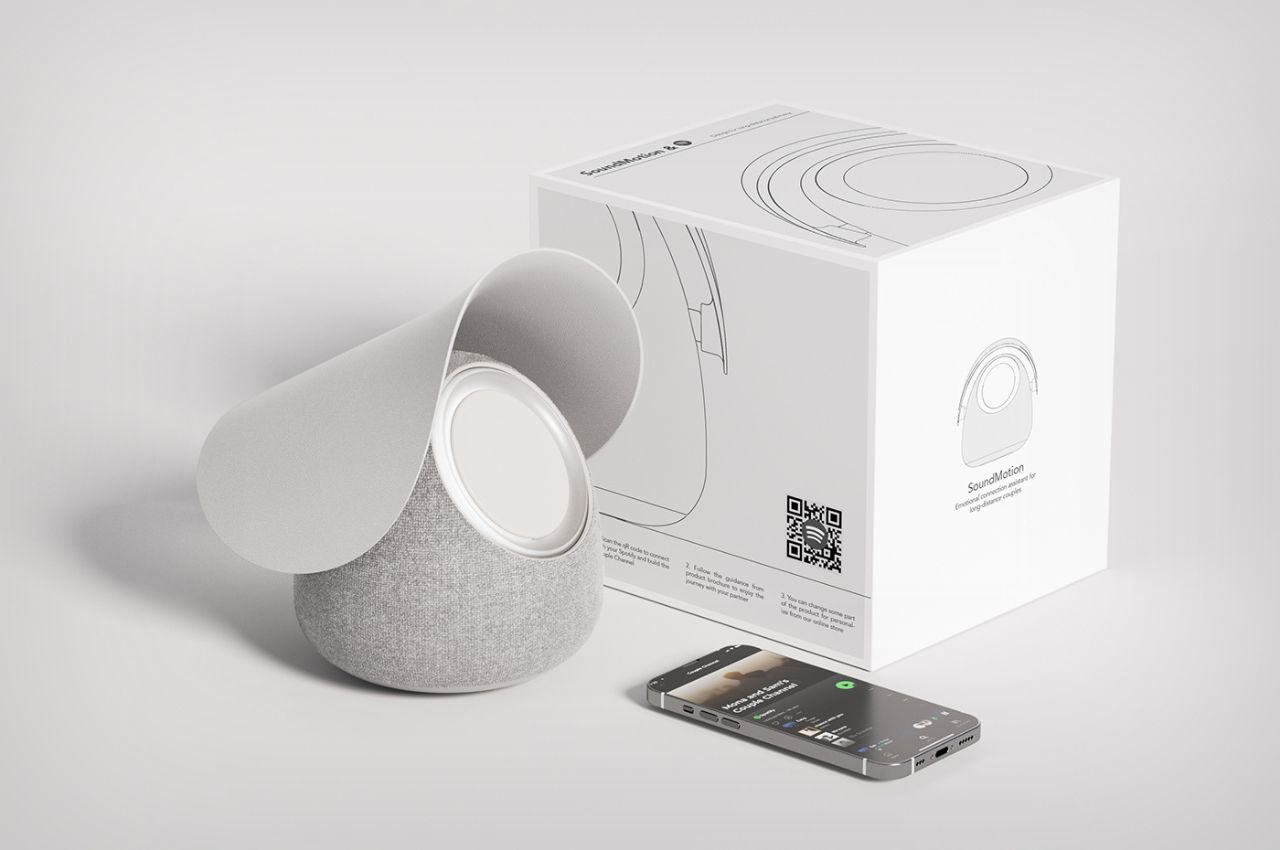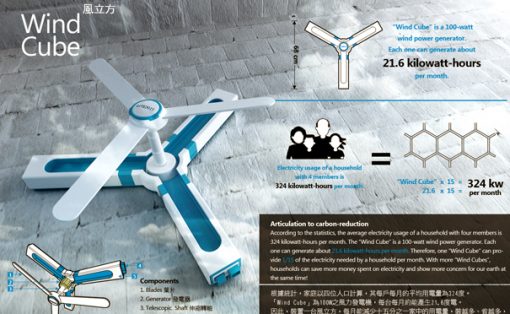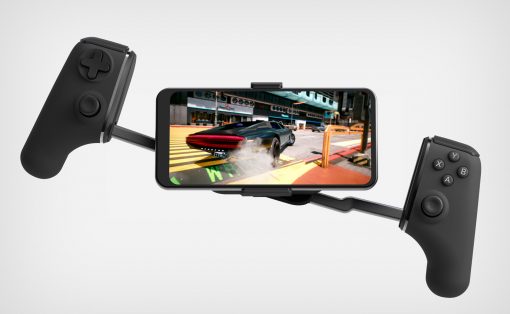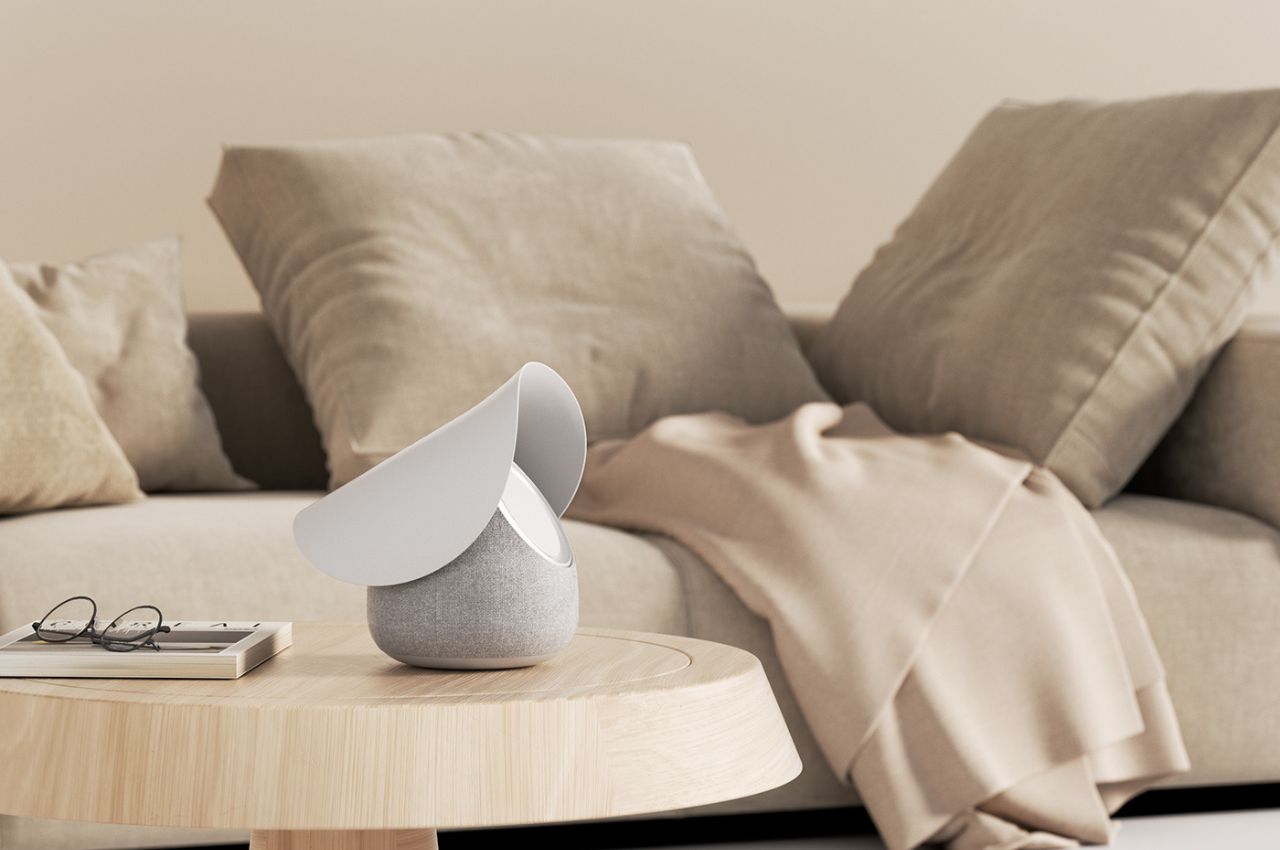
Long-distance relationships (LDRs) pose unique challenges, with 37% of couples parting ways within three months of becoming geographically separated. In response to this, the innovative product SoundMotion has emerged, offering a streamlined way of companionship specifically designed for couples navigating the complexities of distance. Unlike traditional communication technologies that focus on explicit information transmission, SoundMotion integrates music sharing, physical engagement, and subtle notifications to address the emotional nuances essential for fostering intimacy in LDRs.
Designer: Zhujun Pang

While researchers in human-computer interaction (HCI) have explored various technologies for emotional communication in LDRs, they often fall short of addressing the complex emotional changes and needs of long-distance couples, especially whose love languages include ‘physical touch’ and ‘acts of service’. SoundMotion takes a user-centered approach, focusing on implicit emotional communication through the combination of music sharing and physical interactions.



The beginning of SoundMotion involved a meticulous design process, starting with the identification of the need for a user-centered approach. The concept evolved through brainstorming, sketching, and the development of an inspiration board. The initial design involved integrating physical devices with a streaming service and creating a bespoke music-sharing channel for couples. The swinging motion was chosen as the primary means of physical interaction, signifying new messages and indicating the partner’s online status.

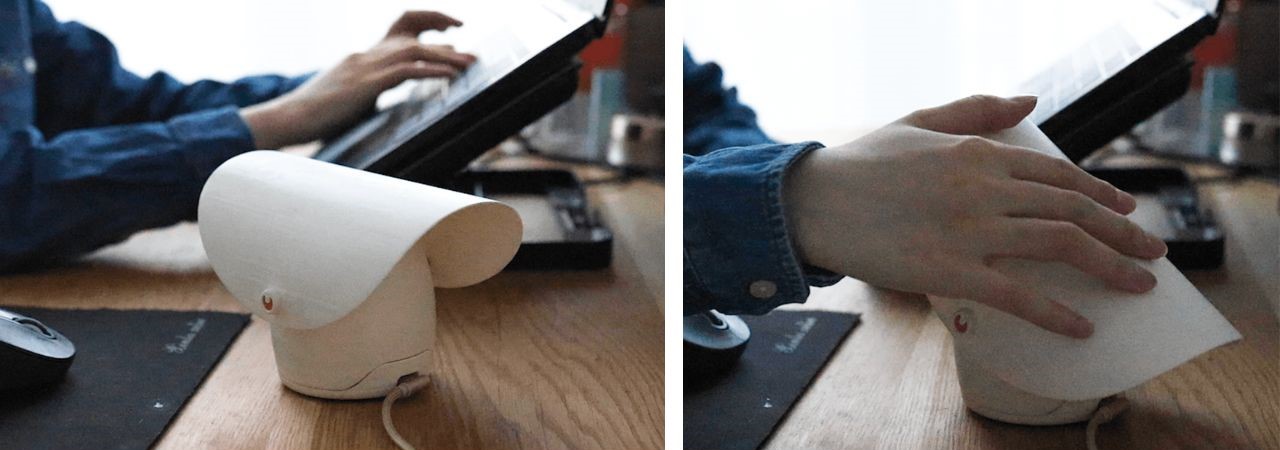
To enhance the user experience, the design underwent iterations, with feedback leading to adjustments in the placement of the screen and the incorporation of personification elements. The swinging motion, inspired by the movement of a bell, aims to strengthen the sense of companionship through anthropomorphism.
SoundMotion is a dedicated communication system facilitating seamless interaction between long-distance couples. Equipped with a device known as SoundMotion, each couple gains access to synchronized music listening and basic physical engagement. The tangible interaction design conveys the partner’s state through subtle, ambiguous cues, capturing attention without intrusiveness.

The SoundMotion device features a hat that acts as a switch, controlling Bluetooth speakers. Opening the hat to a horizontal angle activates the device as a music speaker, while fully opening it triggers the Couple Channel, displaying the screen. The swinging motion of the hat serves as a notification, indicating the partner’s status during music playback.
The development process included prototyping, where an electromagnet initially drove the swinging motion. However, due to limitations in the magnetic field range, a servo motor replaced the electromagnet for more effective performance. This user-friendly adjustment highlights SoundMotion’s commitment to refining the user experience through practical testing and improvements.
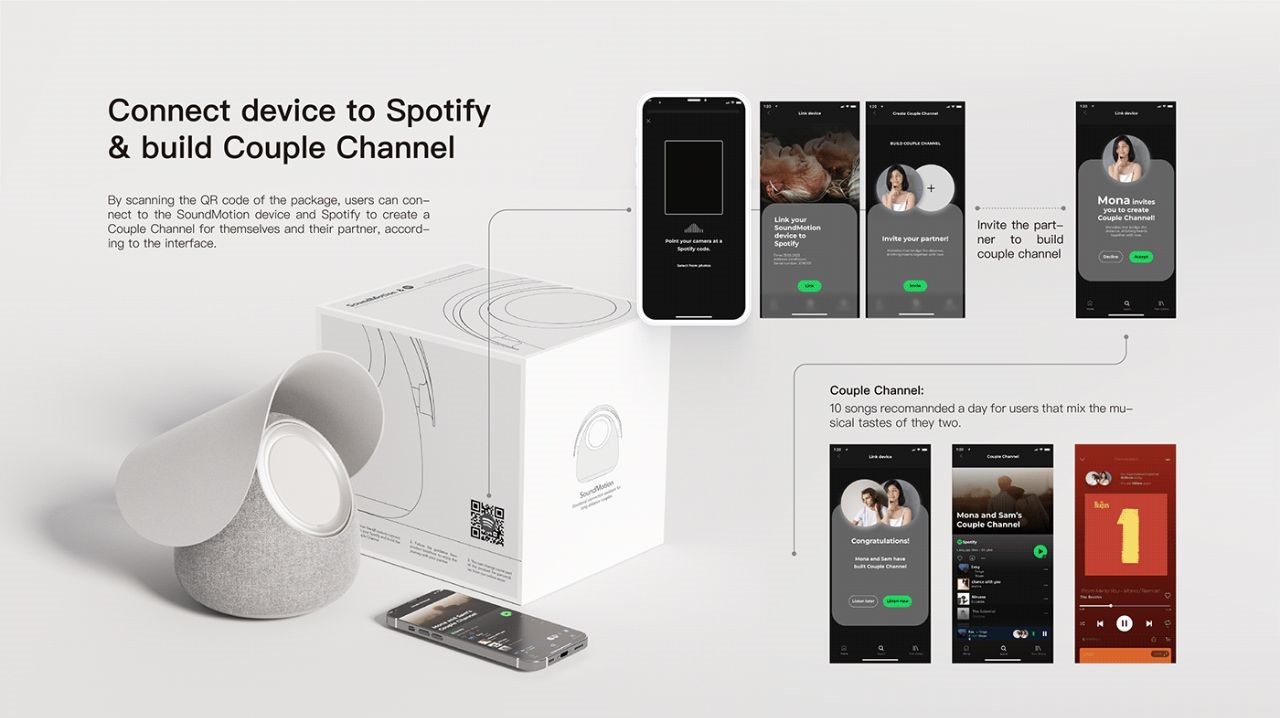
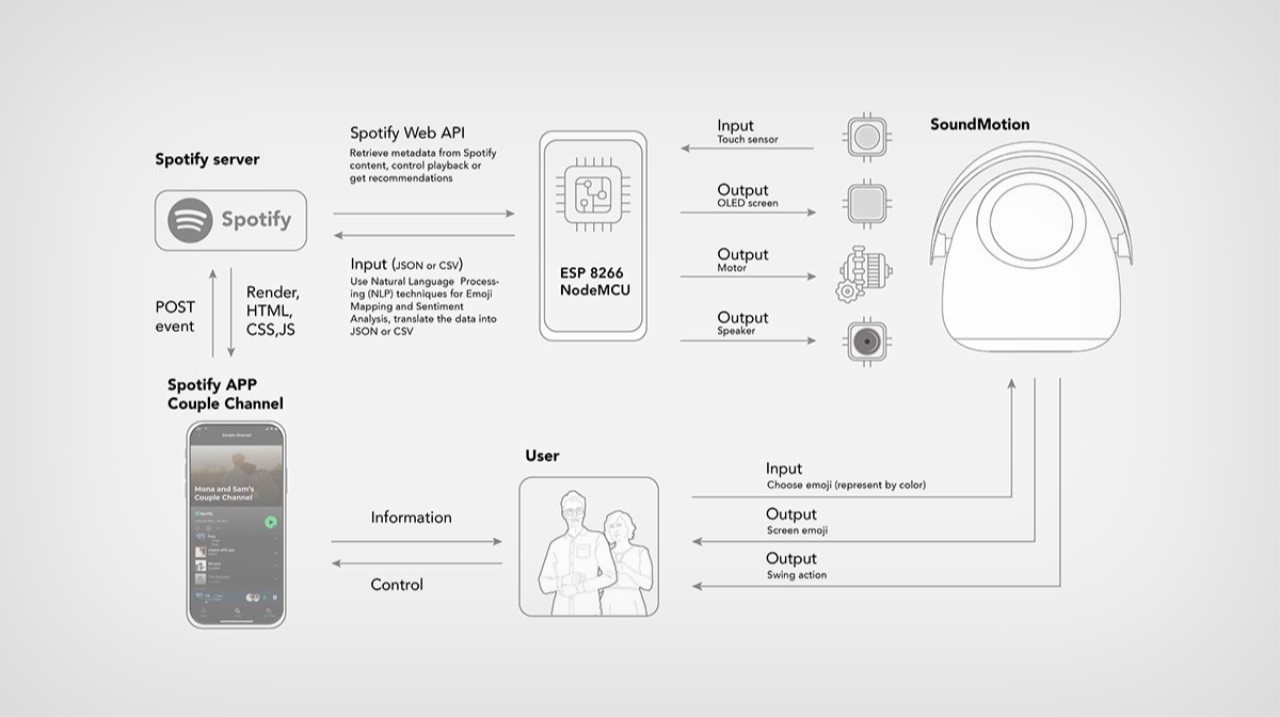
SoundMotion employs the ESP8266 as its hardware platform, establishing a connection with the Spotify server. This connection allows the transfer of emoji feedback data generated during user interaction, enabling Spotify to analyze the data through the Spotify Web API. The result is personalized music recommendations, enhancing the overall experience for long-distance couples.
SoundMotion stands at the forefront of technology designed to address the emotional needs of long-distance couples. By combining music sharing, physical interaction, and subtle notifications, this innovative product offers a unique and user-centered solution to the challenges faced by those navigating the complexities of a long-distance relationship. SoundMotion not only bridges the physical gap but also fosters emotional closeness, making it a promising development in the realm of human-computer interaction for intimate relationships.
